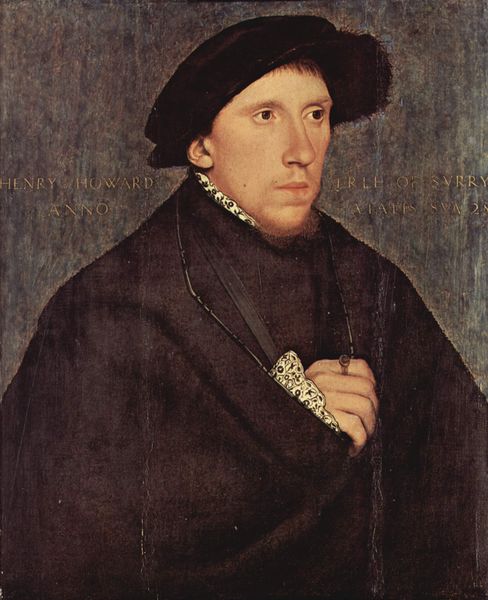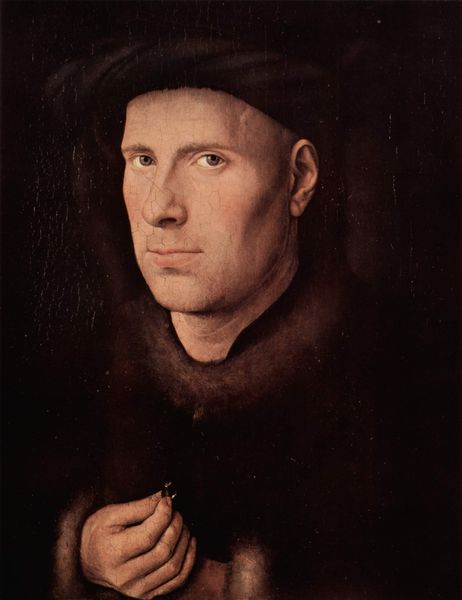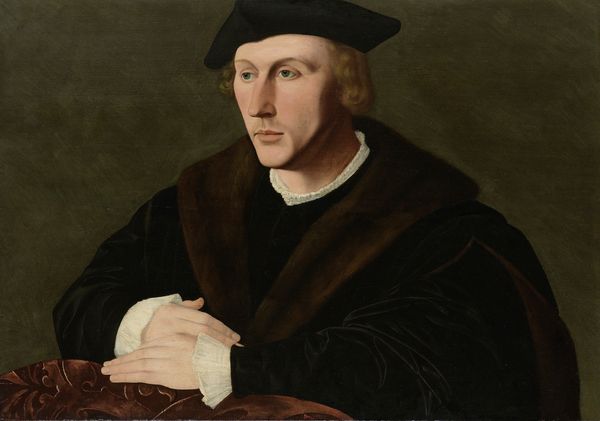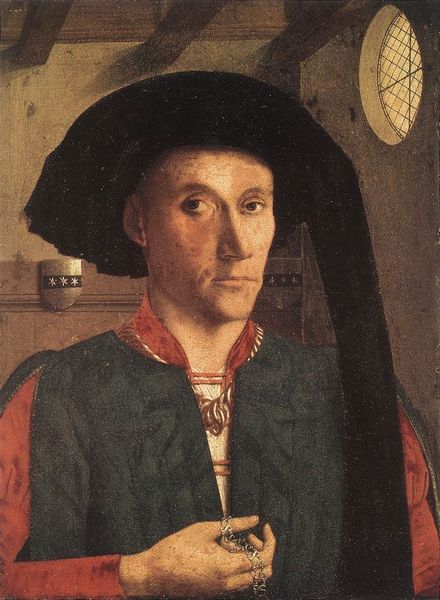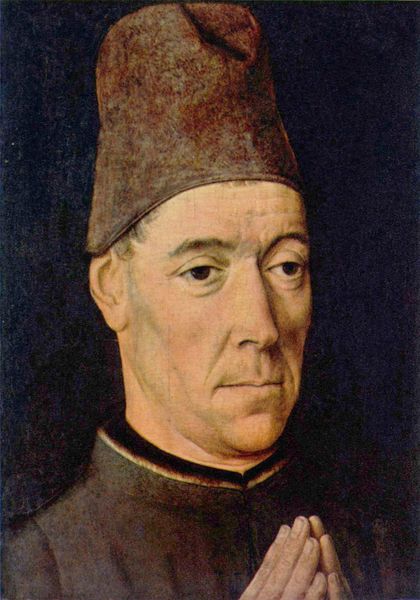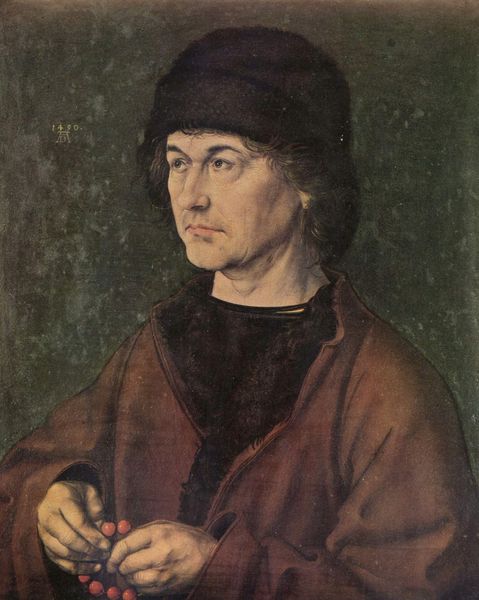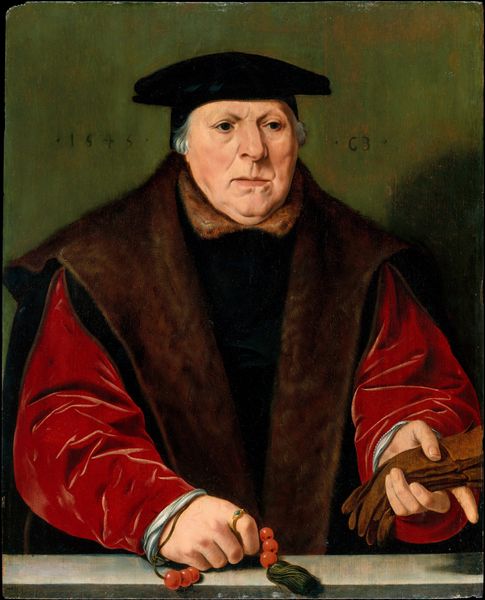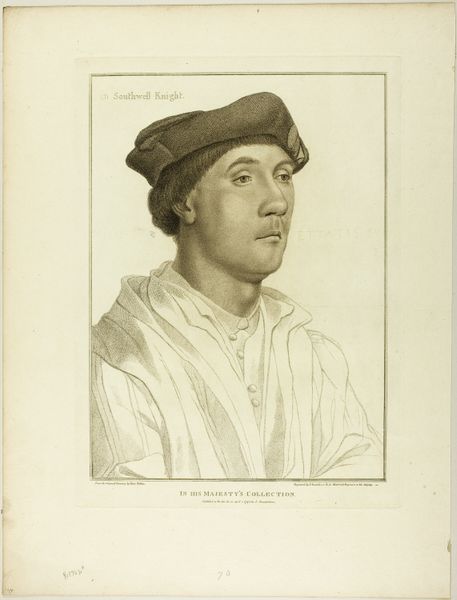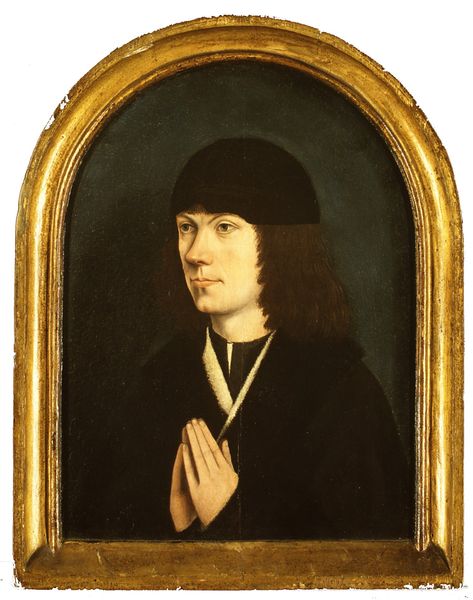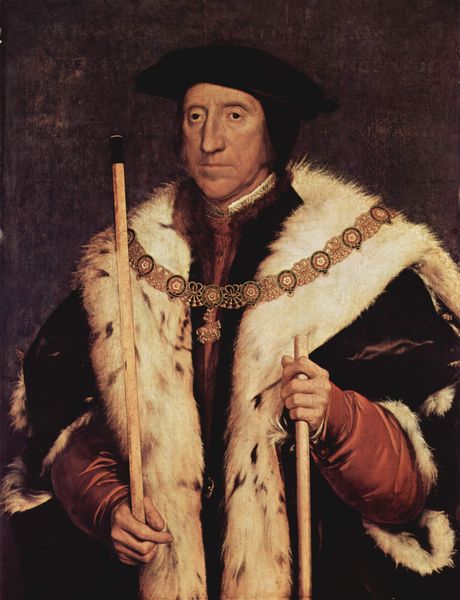
painting, oil-paint
#
portrait
#
painting
#
oil-paint
#
figuration
#
11_renaissance
#
history-painting
#
northern-renaissance
#
realism
Dimensions: 38 x 47.5 cm
Copyright: Public domain
Curator: Let’s take a closer look at Hans Holbein the Younger’s "Portrait of Sir Richard Southwell" from 1536. It's currently held in the Uffizi Gallery in Florence. Editor: He looks… intense. It’s something about the tightness of his lips and that slightly upward gaze. Like he's permanently suspicious. Curator: Holbein had a genius for capturing character, didn’t he? And the materiality! Look at how he renders the textures—the sheen of the velvet, the subtle variations in his skin tone. Holbein was employed by Henry VIII, right? What kind of labor went into that velvet I wonder? Who were the dyers and weavers involved? Editor: Exactly! It's all so tangible, yet almost ethereal. Knowing Holbein worked for Henry adds a layer, doesn't it? He moved among power, capturing it, yet maybe judging it too? His brushstrokes seem to say "I see you" on a level that transcends mere appearance. It makes me wonder about Holbein’s state of mind while painting this portrait. Did he get along well with his subject, or did they dislike each other? Curator: Richard Southwell himself was quite the character, instrumental in the dissolution of the monasteries, so not exactly known for his gentle disposition, let's say. Consider the implications of his role in the material destruction of religious spaces and artistic patrimony—it’s quite ironic given the painting's present location! He also appears, in 1542, in the painting ‘Henry VIII and the Barber Surgeons’, and seems to have outlived every man present on the canvas. It really speaks to a career in public service! Editor: That context definitely deepens my reading. It's no longer just a portrait; it’s a window into a tumultuous time. All of the small things – the way the light catches the gold chain or illuminates the stitching on the hat – are loaded with intention and history. Do you think, that the slightly cold and calculating atmosphere contributes to its aura? The cold and neutral background as well perhaps? Curator: I find that sharpness almost comforting—he wasn't about flattering illusion; Holbein captured something real about the sitter, whether it was flattering or not. I feel drawn to how this oil painting manages to embody such an elusive emotion in his rendering of Southwell. Editor: Absolutely, a real, and somewhat disconcerting vision to behold indeed. Curator: Thinking about this portrait, it highlights art's enduring capacity to condense complex narratives into a single, striking image. Editor: And to remind us that every object, every artwork, is the result of labor, power, and a specific moment in material history.
Comments
No comments
Be the first to comment and join the conversation on the ultimate creative platform.
